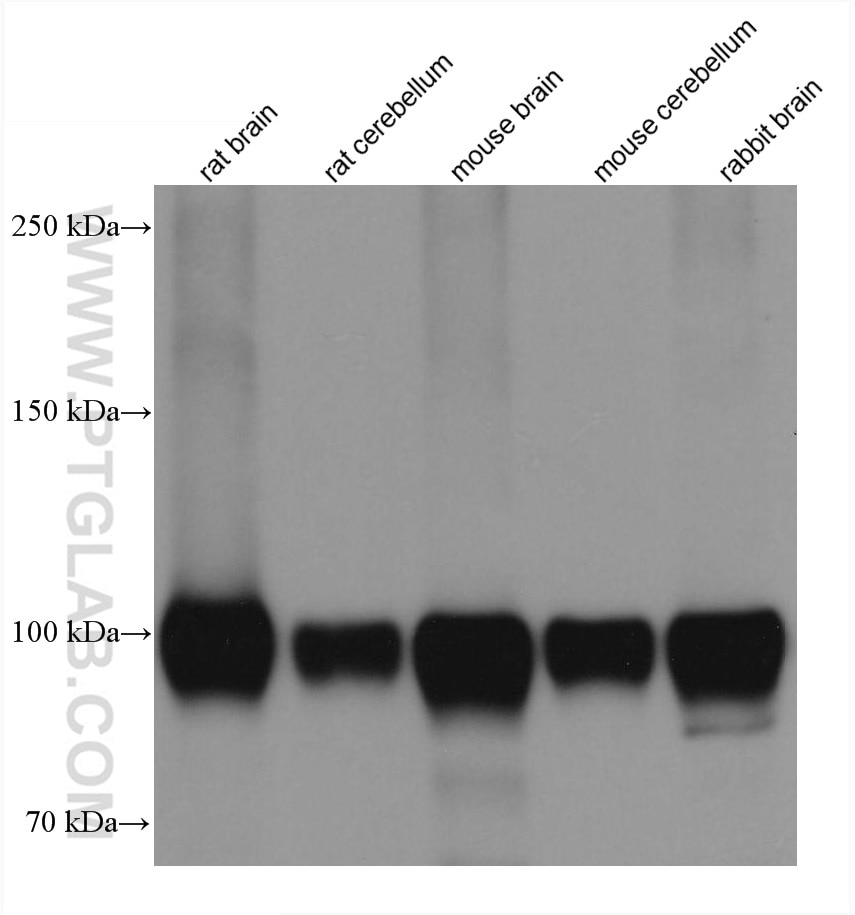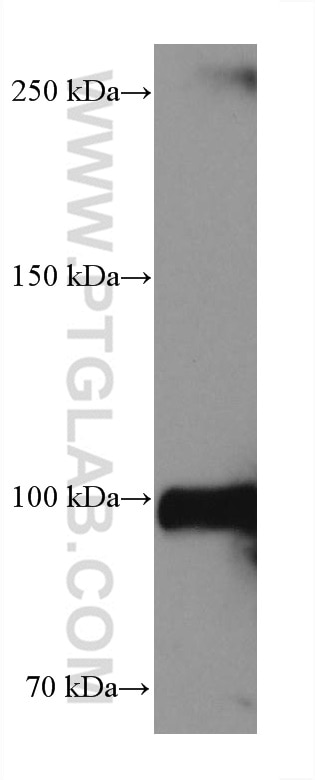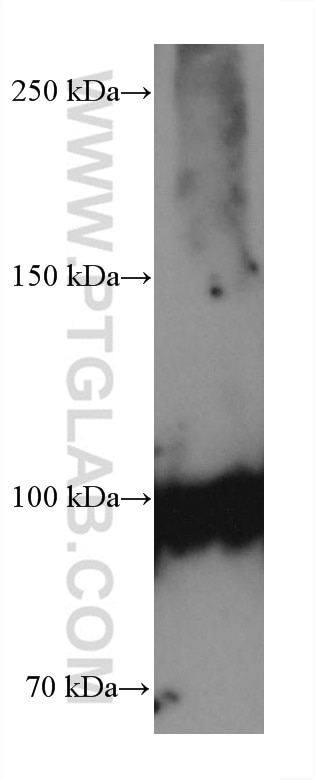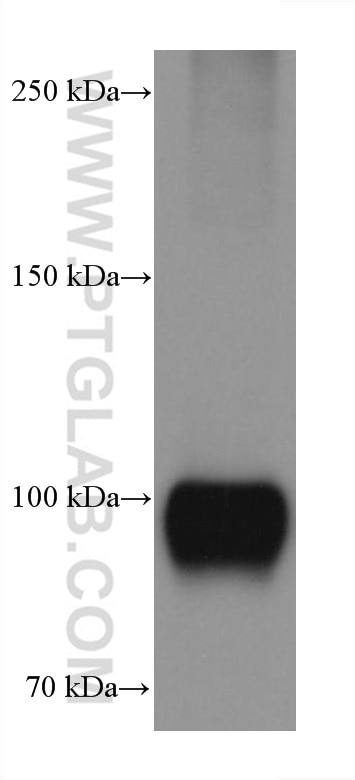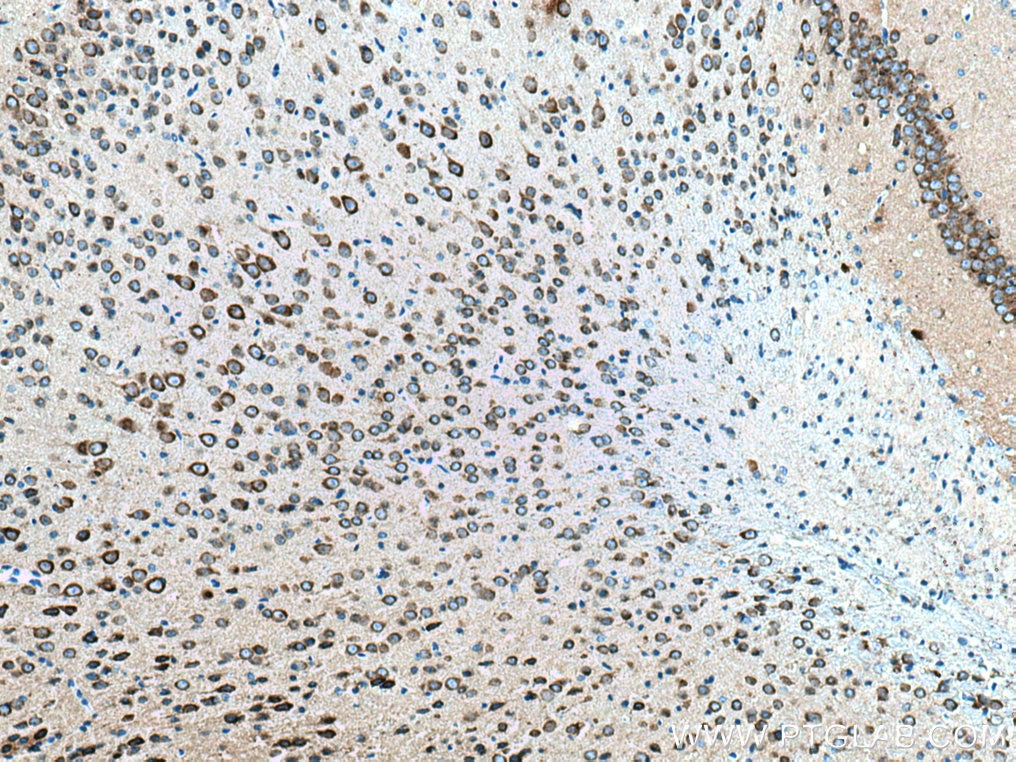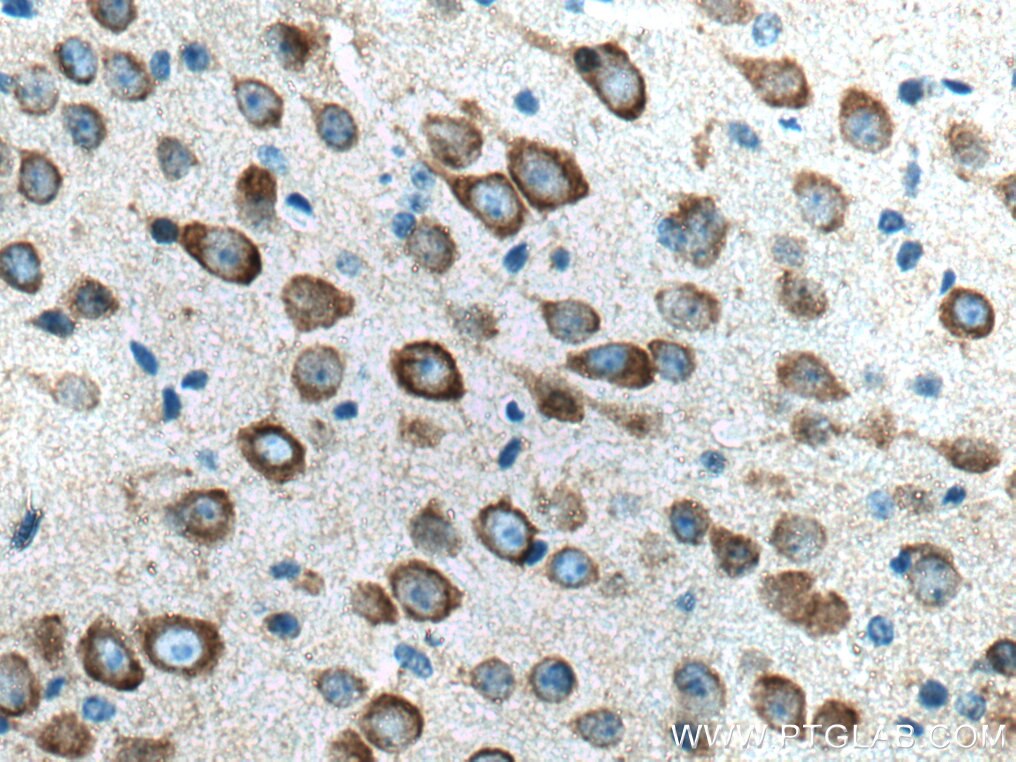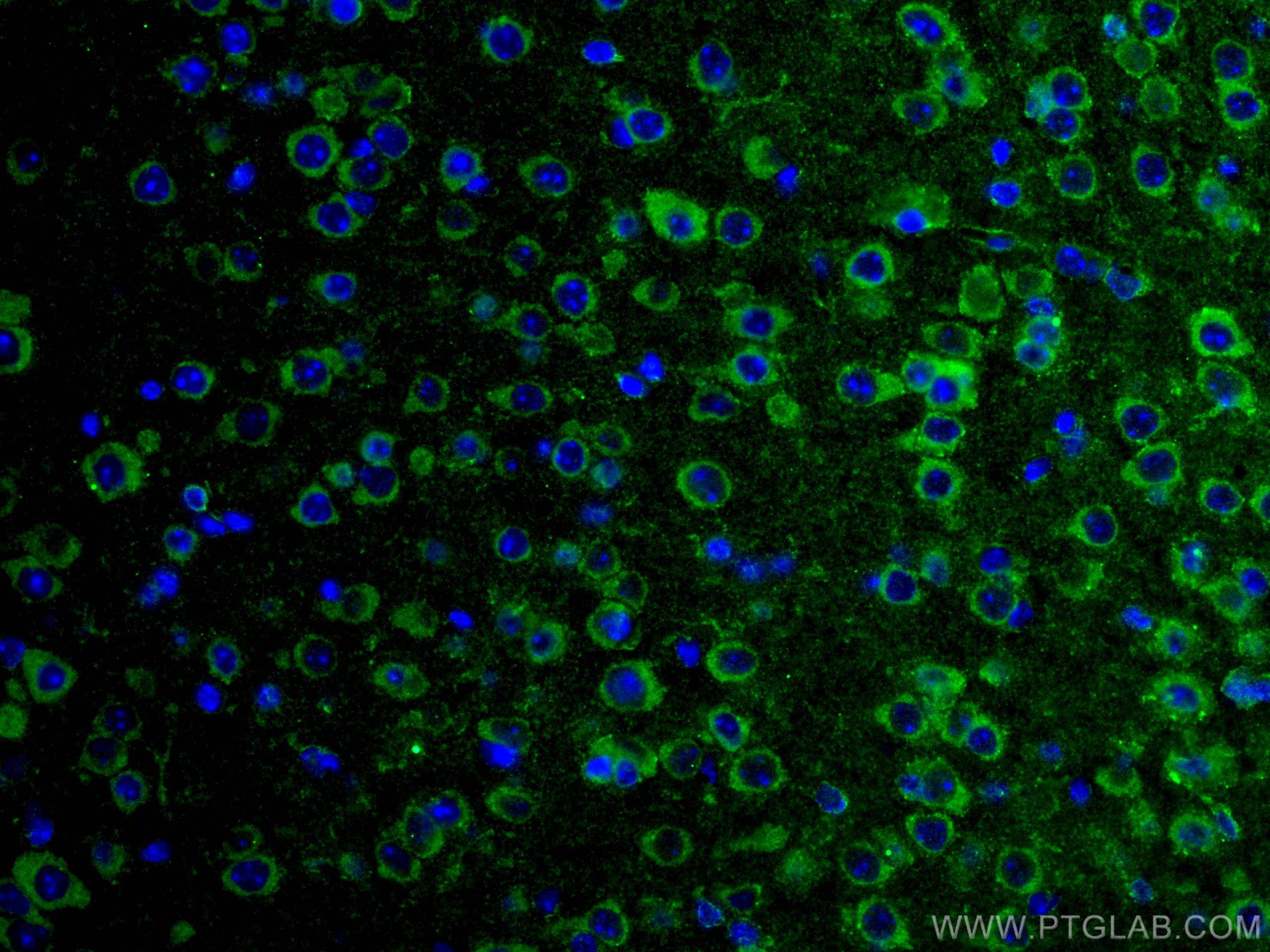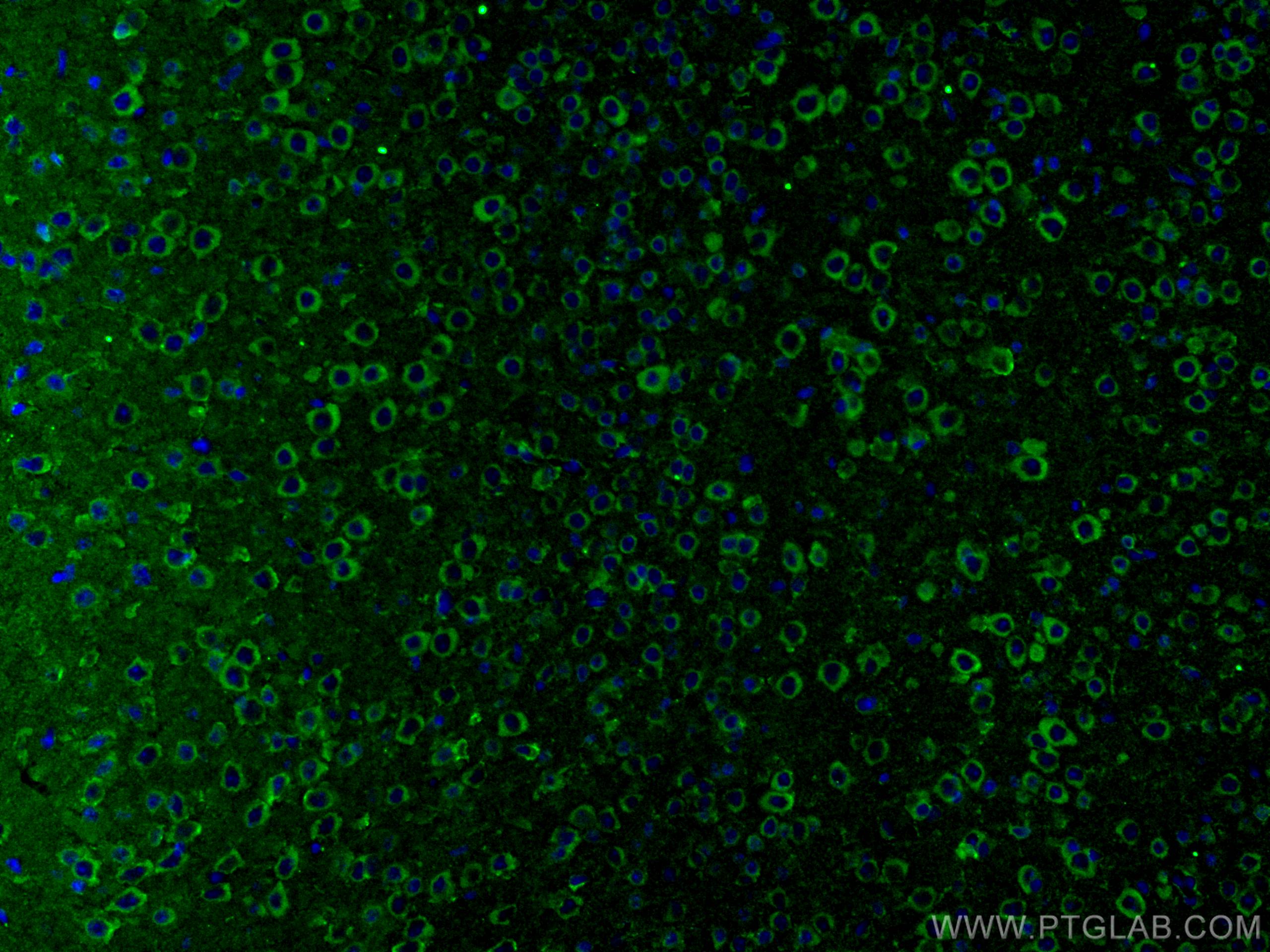Validation Data Gallery
Tested Applications
| Positive WB detected in | rat brain tissue, pig spinal cord tissue, pig cerebellum tissue, pig brain tissue, rat cerebellum tissue, mouse brain tissue, mouse cerebellum tissue, rabbit brain tissue |
| Positive IHC detected in | mouse brain tissue Note: suggested antigen retrieval with TE buffer pH 9.0; (*) Alternatively, antigen retrieval may be performed with citrate buffer pH 6.0 |
| Positive IF-P detected in | mouse brain tissue |
Recommended dilution
| Application | Dilution |
|---|---|
| Western Blot (WB) | WB : 1:20000-1:100000 |
| Immunohistochemistry (IHC) | IHC : 1:5000-1:20000 |
| Immunofluorescence (IF)-P | IF-P : 1:200-1:800 |
| It is recommended that this reagent should be titrated in each testing system to obtain optimal results. | |
| Sample-dependent, Check data in validation data gallery. | |
Published Applications
| WB | See 13 publications below |
| IHC | See 1 publications below |
| IF | See 3 publications below |
| IP | See 1 publications below |
Product Information
67642-1-Ig targets GRIA1 in WB, IHC, IF-P, IP, ELISA applications and shows reactivity with Human, Pig, Mouse, Rat, Rabbit samples.
| Tested Reactivity | Human, Pig, Mouse, Rat, Rabbit |
| Cited Reactivity | human, mouse, rat |
| Host / Isotype | Mouse / IgG2b |
| Class | Monoclonal |
| Type | Antibody |
| Immunogen | GRIA1 fusion protein Ag28932 相同性解析による交差性が予測される生物種 |
| Full Name | glutamate receptor, ionotropic, AMPA 1 |
| Calculated molecular weight | 906 aa, 102 kDa |
| Observed molecular weight | 100 kDa |
| GenBank accession number | BC111734 |
| Gene Symbol | GRIA1 |
| Gene ID (NCBI) | 2890 |
| RRID | AB_2882842 |
| Conjugate | Unconjugated |
| Form | Liquid |
| Purification Method | Protein A purification |
| UNIPROT ID | P42261 |
| Storage Buffer | PBS with 0.02% sodium azide and 50% glycerol , pH 7.3 |
| Storage Conditions | Store at -20°C. Stable for one year after shipment. Aliquoting is unnecessary for -20oC storage. |
Protocols
| Product Specific Protocols | |
|---|---|
| WB protocol for GRIA1 antibody 67642-1-Ig | Download protocol |
| IHC protocol for GRIA1 antibody 67642-1-Ig | Download protocol |
| IF protocol for GRIA1 antibody 67642-1-Ig | Download protocol |
| Standard Protocols | |
|---|---|
| Click here to view our Standard Protocols |
Publications
| Species | Application | Title |
|---|---|---|
CNS Neurosci Ther Integrin α3 is required for high-frequency repetitive transcranial magnetic stimulation-induced glutamatergic synaptic transmission in mice with ischemia | ||
Front Mol Neurosci Follicle-stimulating hormone induces depression-like phenotype by affecting synaptic function | ||
Exp Neurol Long-term variable photoperiod exposure impairs the mPFC and induces anxiety and depression-like behavior in male wistar rats | ||
Phytother Res Rapid antidepressant-like effect of Fructus Aurantii depends on cAMP-response element binding protein/Brain-derived neurotrophic facto by mediating synaptic transmission. | ||
J Psychiatr Res Hippocampal AMPA receptors mediate the impairment of spatial learning and memory in prenatally stressed offspring rats. | ||
Cell Discov Postsynaptic lncRNA Sera/Pkm2 pathway orchestrates the transition from social competition to rank by remodeling the neural ensemble in mPFC |
